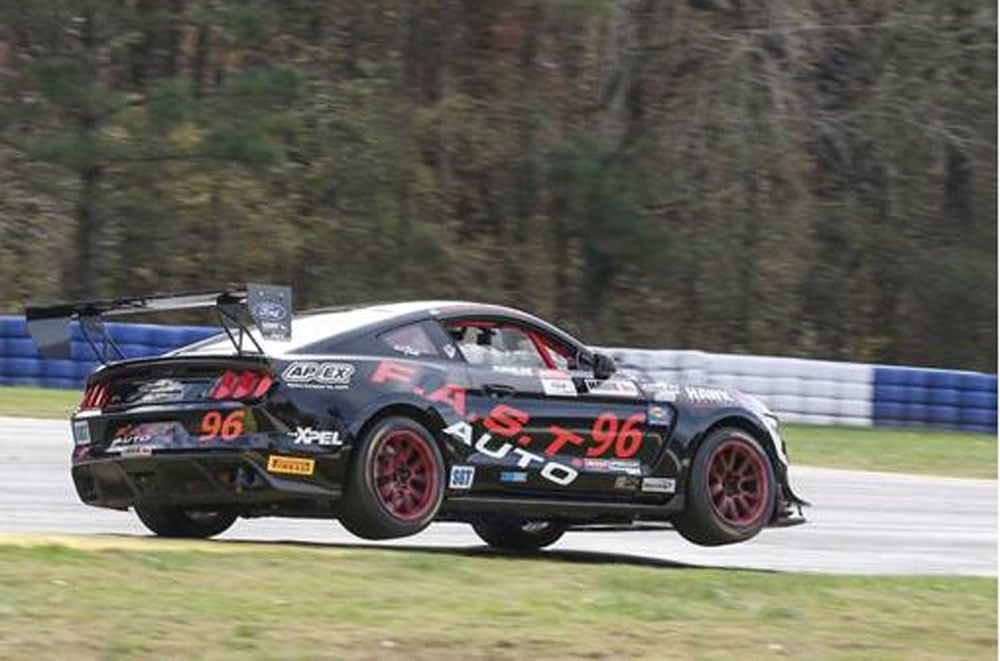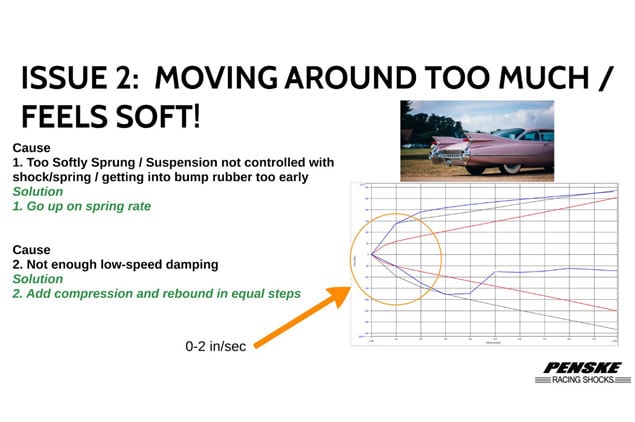What is the Difference Between Low-Speed Damping and High-Speed Damping?

January 10, 2022

Successful drivers don't use stock suspension settings, and they know that their shocks and springs have to be set up to complement their driving style and preferences to get the best performance out of their car or bike.
Of the many settings you can tweak, damping could provide you with performance upgrades to make a difference on the track.
The number of adjustments available with the best shocks allows for total control of variables you'll encounter as you race. Weather changes, bumps, curb strikes, changes in track condition, and elevation changes are just some of the variables you will need to adjust for.
The Difference Between Low-Speed Damping and High-Speed Damping
If you're confused by the term' damper,' it's used interchangeably with 'shock.' Essentially, shocks or dampers tame the oscillating effect of your springs as they store and release energy after both compression and rebound.
Springs cannot efficiently dispose of energy and will continuously compress and extend if nothing tames this bouncing effect. Dampers dissipate the stored energy using oil that flows through a range of valves to control damping force.
Those are the basics. Knowing when to adjust low and high-speed damping and its effect is part of an experimental process as you get to know your car. What's the difference?
Damping 101
Shocks have a primary job: to control the speed at which your wheels move up and down. They perform this job by stopping your springs from compressing and rebounding too quickly. Controlling these variables allows for a better driving experience.
Compression Damping is how quickly or slowly the spring is allowed to compress.
Rebound Damping is how quickly or slowly the spring extends back to its original position.
You can adjust the damping force or rate of your shock when it tries to compress and when it rebounds. Stiffer shock rates slow spring movements, while a softer shock rate allows the spring to move faster.
How quickly the suspension compresses or rebounds will determine the level of damping required.
.jpg?width=635&name=Blog20---What-is-the-difference-between-low-speed-pic1-(1).jpg)

Low-speed Damping
You can split compression into two zones. We're highlighting low-speed compression first.
Low-speed compression examples:
- Gradual altitude changes (even at high speed)
- Progressive power application
- Applying the brakes
These are all smooth loads on the suspension, and you can adjust the resistance to those movements and loads.
How this plays out in a real-world situation:
One suspension issue is oversteer. If your front compression is too soft as you apply the brakes on entry to a corner, your rear will feel light and want to come around when the weight shifts to the car's front.
The solution would be to increase low-speed front compression (as well as stiffen the front springs), limiting chassis pitch movement and giving you a more balanced feel.
Other Low-speed Damping Scenarios
Consider decreasing low-speed compression:
- If you want a looser feel and more movement in the chassis
- If your car or bike feels too high
- You lose traction in loose or slippery conditions
Consider increasing low-speed compression:
- If your car or bike feels too soft, and you want a more stable platform
- If your car's rear squats excessively during acceleration or front nose dives during braking
- If your chassis rolls too much while turning a corner
High-speed Damping
Many drivers think high speed is the speed you're moving at, but it actually represents how fast your shock travels through its stroke, especially the entire stroke length.
If you're traveling down a smooth road at 80 mph, you'll still be in the low-speed compression zone because there's not much acting on the suspension. If you're going at a slower 30 mph, but you hit a bump, that's a high-speed movement, and your high-speed compression comes into play.
You can adjust the resistance to those bumps by making your shocks stiffer. This is often driver-dependent. Some drivers will prioritize speed over comfort, especially on a smooth race track where bumps are less likely to have a significant effect.
High-speed Damping Scenarios
Consider decreasing high-speed compression:
- If you'd like more comfort
- If track bumps or curbs feel jarring or upset the optimum racing line
Consider increasing high-speed compression:
- If you're bottoming out on bumps
- If you're feeling every bump and want to feel more comfortable
- If you're on a smooth track
Low-speed and High-speed Rebound Damping
Rebound is the opposite of compression. After a shock compresses, it has to extend again to allow the shock to return to neutral.
While low-speed compression damping will range between zero to three inches per second velocity, and high-speed is three inches or more, some compression velocities can exceed thirty inches per second or more, depending on the application.
Rebound velocities are much different.
The rebound velocity is directly related to how much spring load is generated once compressed. Typically you will have a similar low-speed velocity for rebound, where high-speed rebound generally stays between five to ten inches per second.
There are odd circumstances that can change this. If you have a very stiff preloaded bar, this would store energy and translate that energy back out. This is more than just the spring load pushing back out on the wheel. Again, there may be setup differences or other circumstances, and it's best to speak to a specialist about your specific setup.
Soft or Stiff Rebound?
If your springs are too soft, they might compress too quickly and allow your suspension to over travel, causing your suspension to rely on bump rubbers or stops. You'll see a dramatic and rapid increase in rate to stop the suspension from bottoming out or seeing metal to metal contact causing loss of control.
This is all part of low-speed and high-speed rebound. You can see spring rates significantly affect how much or little rebound damping is needed.
Let's use the oversteer example again:
Once you're through the entry and apex and you're exiting a corner, you'll be back on the throttle, and you'll need the weight to transfer to the rear tires for traction.
If your front rebound is too stiff or slow, you'll limit the weight transfer, and on the flip side, if you reduce the rebound too much, the weight will transfer backward too quickly, meaning your front tires lose traction.
The Importance of Low-Speed and High-Speed Damping
If you have too much damping, you'll restrict the movement of the suspension, but with too little damping, the suspension allows too much movement.
Too much compression damping wouldn't allow your shocks to compress quickly enough to soak up a bump, and forces would be transmitted to the chassis and you, but too little compression damping, and you risk bottoming out and losing traction.
You can dial in compression and rebound precisely how you want it for your situation and needs by adjusting both.
Are There Optimum Damping Settings?
The optimum damping settings allow your car or bike wheels to maintain traction on any surface, through corners, and over bumps. Compression settings should be light enough to allow the springs to soak up a bump but not so soft that the suspension bottoms out.
Rebound settings should be light enough that the springs rebound enough to allow the tire to track the downslope of the bump, but not so light that it doesn't control the energy of the springs. The car will wallow and feel unstable if the rebound is too soft.
Want to learn more? Check out How to Adjust Low and High-Speed Damping to Optimize Shock Performance and Spring Rate or Damping? How to Stiffen Rear Suspension Properly
Finding Your Ideal Setup
How do you know what the correct settings are? It will depend on your application, your suspension setup, including ride height, the type of shocks you use, and your preferences as a driver.
You don't have to figure this stuff out on your own. Rather than buying a set of shocks that are configured to work for everyone, you can work directly with the Penske Shocks team to begin the setup optimization process BEFORE purchasing anything.
Customizing the hardware selection and setup process to your specific application and your particular needs ensures you get more out of your shock setup faster.
After you purchase your shocks and customize your setup, you'll receive continued support from the Penske team. To learn more about our S3 process (Shocks + Setup + Support), reach out to us here and get the ball rolling


%20(1).png?width=1080&height=1080&name=Heritage%20Cruiser%20Shock%20-%20IG%20(1)%20(1).png)